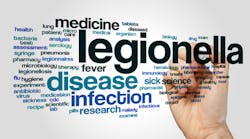According to studies published in medRxiv, estimating COVID-19 cumulative incidence in Africa remains problematic due to challenges in contact tracing, routine surveillance systems and laboratory testing capacities and strategies.
A meta-analysis of population-based seroprevalence studies was undertaken to estimate SARS-CoV-2 seroprevalence in Africa to inform evidence-based decision making on Public Health and Social Measures (PHSM) and vaccine strategy.
Seroprevalence studies were searched for conducted in Africa published 01-01-2020 to 12-30-2021 in Medline, Embase, Web of Science, and Europe PMC (preprints), grey literature, media releases and early results from WHO Unity studies. All studies were screened, extracted, assessed for risk of bias and evaluated for alignment with the WHO Unity protocol for seroepidemiological investigations. Descriptive analyses were conducted of seroprevalence and meta-analyzed seroprevalence differences by demographic groups, place and time. Estimations were made of the extent of undetected infections by comparing seroprevalence and cumulative incidence of confirmed cases reported to WHO. PROSPERO: CRD42020183634.
54 full texts or early results were identified, reporting 151 distinct seroprevalence studies in Africa. Of these, 95 (63%) were low/moderate risk of bias studies. SARS-CoV-2 seroprevalence rose from 3.0% [95% CI: 1.0-9.2%] in Q2 2020 to 65.1% [95% CI: 56.3-73.0%] in Q3 2021. The ratios of seroprevalence from infection to cumulative incidence of confirmed cases was large (overall: 97:1, ranging from 10:1 to 958:1) and steady over time. Seroprevalence was highly heterogeneous both within countries - urban vs. rural (lower seroprevalence for rural geographic areas), children vs. adults (children aged 0-9 years had the lowest seroprevalence) - and between countries and African sub-regions (Middle, Western and Eastern Africa associated with higher seroprevalence).
High seroprevalence was reported in Africa suggesting greater population exposure to SARS-CoV-2 and protection against COVID-19 disease than indicated by surveillance data. As seroprevalence was heterogeneous, targeted PHSM and vaccination strategies need to be tailored to local epidemiological situations.





